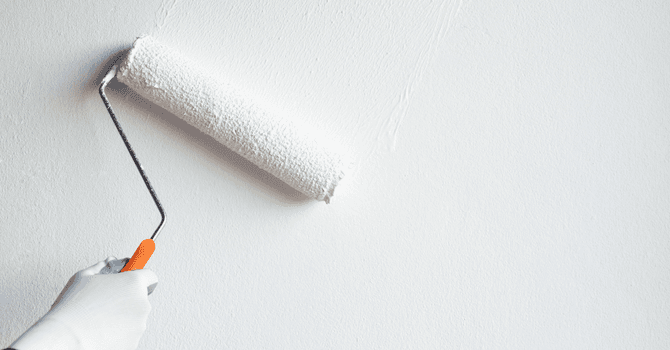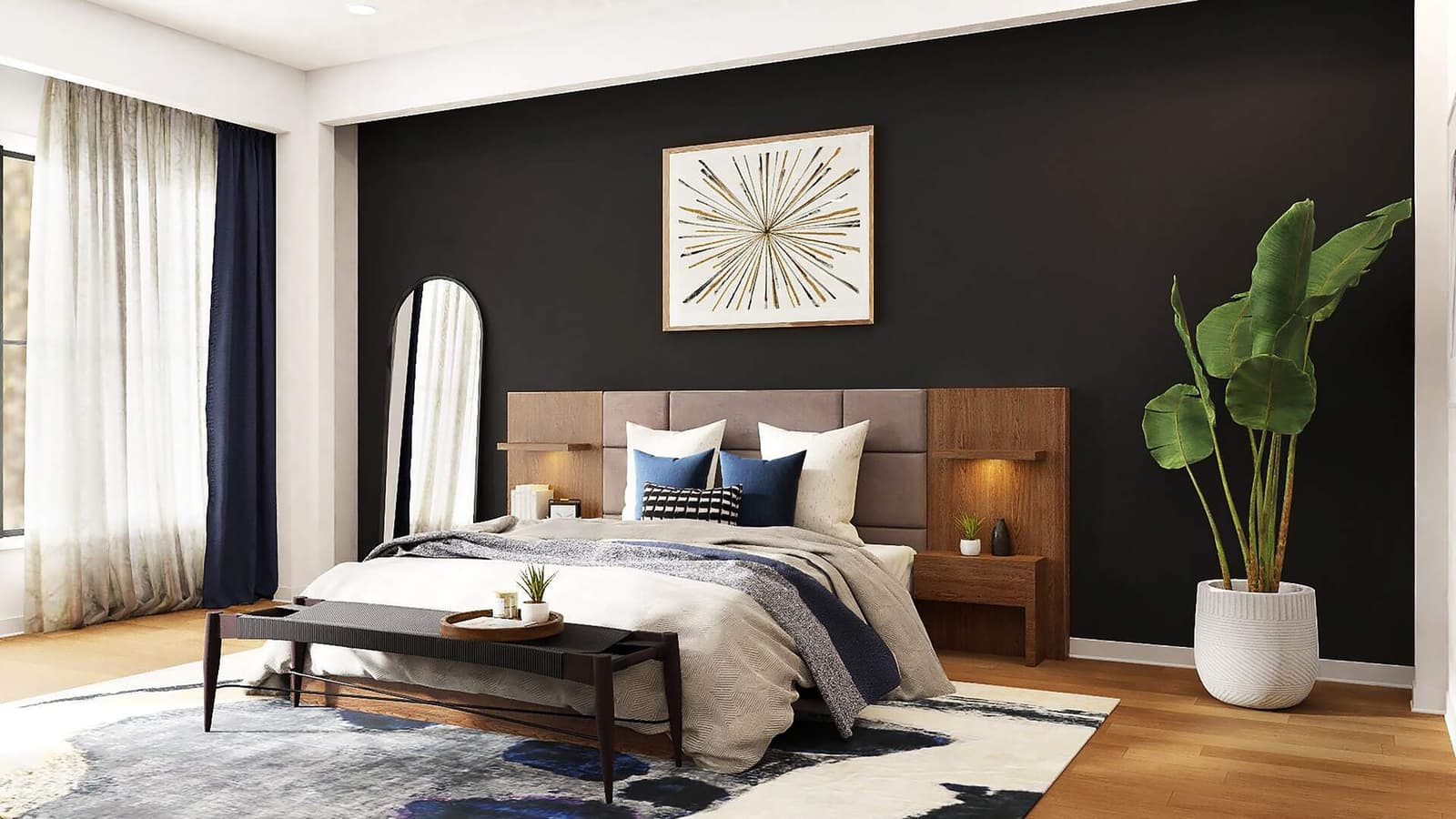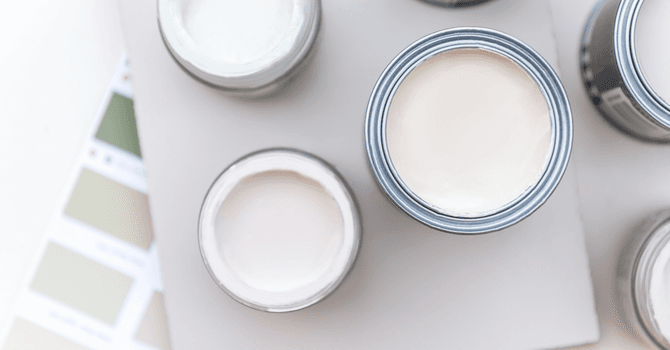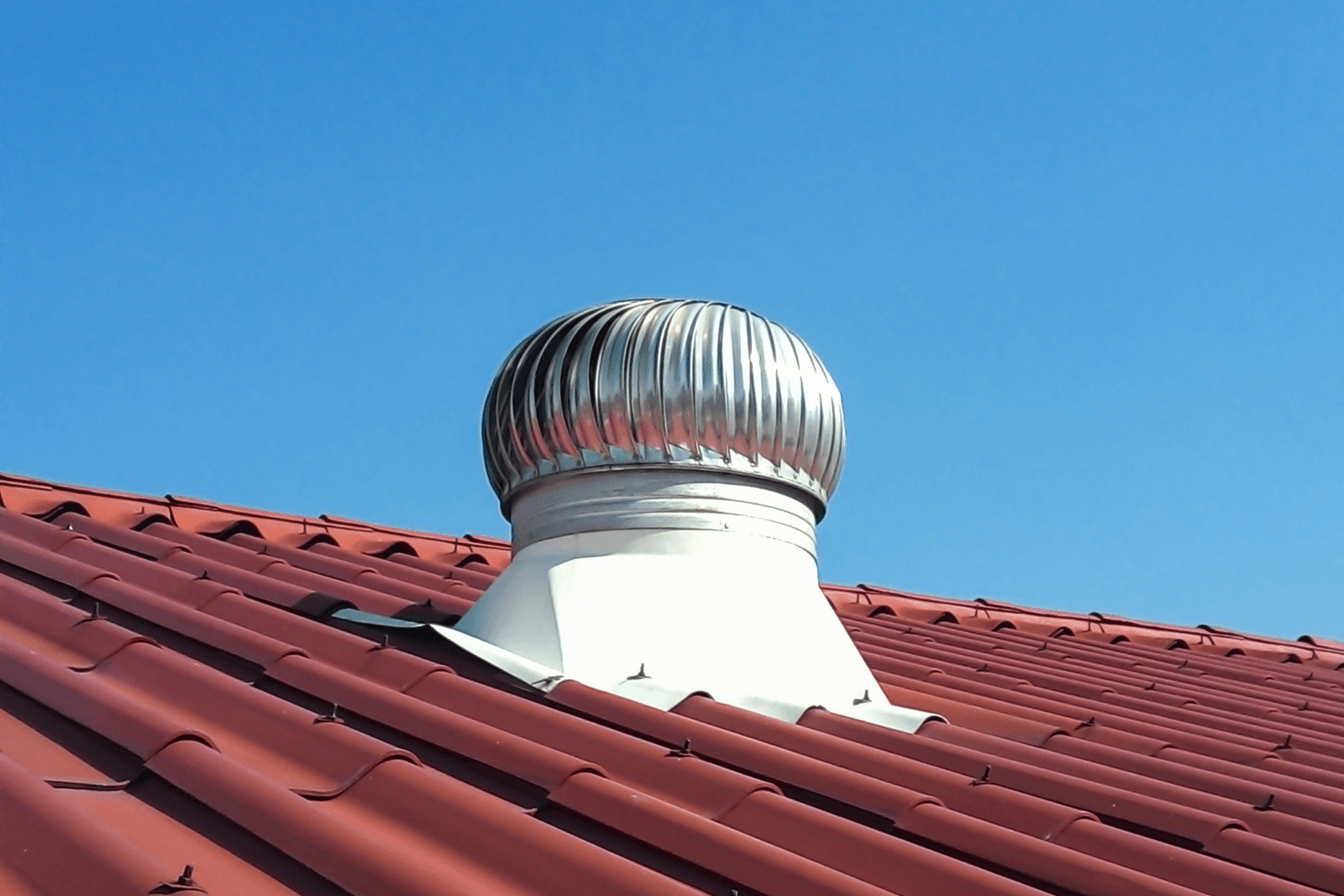Everything to Know About Acrylic Wall and Surface Paint
By Editorial Team
Updated on November 3, 2025

Most people know about acrylic paint and acrylic mediums or have heard of water-based paints. However, few actually know what acrylic pigments actually entail. As a matter of fact, when undertaking a renovation project, we often find ourselves faced with obscure terms that are hard to grasp at first.
The construction and renovation vernacular, the products and tools used, and the techniques mastered are varied and complex. The word “acrylic," and various other terms like "paint films," "acrylic paint films," and even "binders," are definitely among these terms.
Some will say that understanding this information isn’t really important, as long as one knows how and when to use a tool or material in question, you don't need to know what acrylic polymer emulsion means. However, the more one takes the time to understand the element with which they’re working, the better their chances of mastering its use are.
As we’ve done in the past with other products, here’s a guide that’ll allow you to better understand acrylic paint, acrylic mediums, binders, and their uses.
What's acrylic paint, its components, and is it water-based?
Source: Canva
The Oxford Dictionary defines “acrylic” as “made of a substance produced by chemical processes from a type of acid.” But, simply said, paint usually includes the following components: pigments, binders, and liquid (water).
Acrylic paint was developed in the 1960s by mixing colour pigments with water and latex, so it has nothing to do with oil paint. The whole thing is mixed until a smooth and uniform substance is obtained, resulting from the polymerization of the elements found in these ingredients, hence the term acrylic polymer emulsion, which is basically the binder. As such, the word “acrylic” can be linked to “paint.”
The same product is often referred to as “water-based paint.” These terms are interchangeable and reference different elements used during the manufacturing process. This label is used to differentiate these products from oil paints.
Another interesting fact to note is that when researching, according to some sources, acrylic paint is described as being different from latex paint, while in other instances, the two are grouped together because of their similarities and the fact that they're often mixed together in the same paint can. However, if you're not sure which one to choose, it's best to check with an expert who can assist you in selecting the best product and brands for your project.
Is acrylic an oil-based paint?
The short answer is no, and contrary to popular belief, it's not solely intended for kids' craft projects. Here are the five factors that differentiate acrylic pigments and oil paint pigments:
Drying time (acrylic pigments dry much faster);
Fumes (oil paints are much stronger);
Eco-friendly (water-based and acrylic paints are greener for the most part);
Application (acrylic is easier);
Coverage (oil-based pigments offer better coverage and require fewer coats).
How Best to Apply Acrylic Paint

Source: Canva
If you've ended up here, you probably want to use acrylic paint on a wall, a canvas, or to cover a surface inside or outside your home. The following guidelines apply to most surfaces.
However, for more detailed instructions, it's best to consult with professional painters who'll be working with you as you move forward with your project.
But, here’s the gist of it:
Make sure you buy the right product! There are countless choices, brands, and pigments out there suitable for different environments and different types of surfaces, even if your focus is on acrylic paints instead of oil paints. If you're painting a surface within a humid space, you'll want to choose a product formulated to withstand said conditions.
Consider how much paint you’ll need.
Establish whether or not you’ll need to use a primer to prep the surface prior to applying that first coat of paint. Chances are, you will.
On top of using a primer, prior to painting the surfaces, prep and make surfaces alike. Since you’re wanting to revamp any given surface, now seems like the right time to correct any imperfections – fill in holes, sand down the surface, and thoroughly clean them. That being done, the result will be much better.
Start with the angles and edges of walls and objects to be painted. Once this step is done, you can take out your roller to paint over the large surfaces. Work from top to bottom, a square meter at a time. If you notice paint streaks, carefully smooth out the section and avoid adding excess paint in said areas.
Follow the expected drying time. One of the biggest mistakes people make when painting with acrylic paint on walls or furniture is not allowing it to dry fully. Adding another coat while the first layer is still wet will result in the paint taking much longer to dry. It may even peel off the wall.
Get ahold of the right tools. In hardware and specialty stores, you'll find paintbrushes and rollers to use with acrylic paints. Depending on the type of surface you plan on coating, you'll be able to buy tools specially designed for the different stages of the project. Here are some tools that should be part of your toolset:Round tip paintbrush for trimming and cutting;Decent acrylic paint roller;Paint tray;Sandpaper;Rags;Spackling paste;Putty knife;Tarp;Painter’s tape.
Non-Craft Acrylic Painting Techniques: Primer First?

Source: Canva
Nowadays, some products combine a primer and paint, but it’s not always the best option. For an end result that meets your expectations, it’s best to use an acrylic primer. Unless you’re painting white on white, and still then, you should probably still apply a primer to ensure the paint really adheres to the surface. If you’re unsure, seek out the help of an expert in the matter as they’ll be able to provide an accurate answer according to your specific situation.
Painting for beginners: What's acrylic paint good for, and where is it best used?
In terms of surfaces on which it can be applied, acrylic pigments can be used on most indoor and outdoor surfaces of a home, such as:
Interior walls;
Ceilings;
Exterior siding (brick, metal, wood);
Woodwork (decking, patios, fences, pergolas, sheds, interior mouldings);
Furniture (kitchen cabinets, bathroom cabinets, furnishings);
Art murals & projects (glass, fabric, etc.)
You just have to make sure that you’re buying the right products, those designed for the surface you intend to paint. Note that the above-mentioned list isn't curated according to oil paints, and heavy body acrylic paint is best used for crafts.
Here are some related articles to peruse:
Pros and Cons of Using Indoor/Outdoor Acrylic Paint
The following chart depicts all the pros and cons of using this type of non-oil paint on walls and other surfaces:
Pros of water-based paint
This type of paint adheres really well to surfaces (too well, according to some!).
Quick drying time.
It’s a flexible and versatile product that adapts to all surfaces (given that adequate prep work was done prior to applying the first coat of paint)
Paint stains and tools are easy to clean (like on skin, floors, and clothes).
Acrylic wall and surface paint pigments are more on the affordable side compared to other products available on the market.
The product fumes aren’t as strong as that of oil-based paints.
Cons of water-based paint
Oftentimes, several coats are necessary to achieve the desired outcome.
The finish isn’t as smooth as it is with oil-based paints.
Depending on the finish, some surfaces can become quite difficult to clean.
Quick drying time makes it all that much harder to create any sort of visual effect with other colours.
Here are more related articles to further your knowledge prior to jumpstarting your painting project:
What's the average cost of acrylic paint and where can I buy a can?

Source: Canva
In terms of renovation-intended acrylic paint (not heavy body acrylics), such paint can be purchased from any hardware or paint store near you, as well as select department stores. For a gallon (3.78L) of paint, budget between $25 to $70. This price bracket spans from a low-end product without a primer to a high-end product with a primer.
If you decide to purchase a primer separately, you’re most likely to buy a product for about $30 to $60.
Keep an eye on the flyers, these products tend to benefit from a good discount now and then!
Check out our article Exterior Painting Projects: Average Price to know more about the subject matter.
Acrylic Paint Colours: Finding the Right Paint Pigment
When we say that there are tens of thousands of paint colours and various pigments to choose from, it's enough to make you want to rip your hair out! Luckily, there are many tools available to help you choose the right paint pigments, both from various brands and from design apps available on your computer or phone. Feel free to try them out to find the colour you like best.
From matte black to glossy beige, by way of velvety forest green or satiny royal blue, there's really something for everyone!
What are the different acrylic paint finishes?

Source: Canva
Unlike oil paints, this type of paint is available in several finishes, including:
Matte;
Velvet;
Pearl;
Satin;
Semi-gloss;
High-gloss.
Expert painting services also have created specialized finishes, but the ones mentioned above are the most common. You’ll be able to choose the finish that best suits your needs and taste.
A matte finish is especially recommended for ceilings, as any flaws will be less apparent, while on the walls, a pearl, satin, or velvet finish is often preferred. As for a high-gloss or semi-gloss finish, it's ideal for rooms that require frequent cleanings, such as the kitchen or bathroom.
Looking for something else?
Related articles
The latest industry news, interviews, technologies, and resources.

Amanda Harvey
•07 Nov 2023
Let's be honest, modern life is busy. Between work, cooking, cleaning and additional day-to-day activities, every hour's filled to the brim. It's normal that you don't have the time to think about out-of-sight household things like attic ventilation. But you may not realize how important proper roof and attic ventilation actually is, not only for the maintenance and lifespan of your roof but for lower energy bills as well as the longevity of your home. Lack of proper ventilation can lead to a world of problems, and we're going to offer some information on a common solution: attic ventilation!

Editorial Team
•07 Nov 2023
Facilitating independence and make everyday life at home easier for individuals with reduced mobility or suffering from various other disabilities are desirable lifestyles nowadays. Knowing that people are less and less marginalized and can, with ease, share their real needs with others lends a helping hand to the cause).

Editorial Team
•08 Oct 2025
Is your work experience deemed non-construction, yet are hoping to leverage your know-how, log hours in your apprentice record book, and break into the industry? Come along as we take a deep dive into this subject matter, detailing how best to shoot your shot while showcasing your relevant work experience.

Editorial Team
•07 Nov 2023
When it comes down to finer details of home décor, it’s all about the unique and sophisticated. In the modern, streamlined home, these careful particulars are becoming less and less common. Timeless elements are forgotten, and included in this is the classic crown moulding.

Cynthia Pigeon
•07 Nov 2023
Are you looking to close off your double living room, kitchen, closet, or guest bedroom? The space itself is already divided, all you need is a door, really. Hinged, swinging, sliding, pocket, folding, pivoting: there are a ton of door models out there, and you are bound to find one that will fit your needs, and that will not clash with your decor.